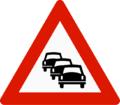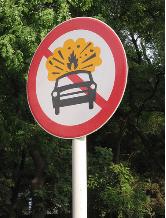European Road Signs
28th of August
 Travelling by car is a great way to travel. The freedom that a car offers, gives you that bit of extra by letting you experience the transition between cities as you have the possibility to stop off in spots that the bus or train won't. Due to the recent economic climate, car rental companies have been considered few and far between and this has inevitably caused prices to rise and standards to drop. However, Europe is possibly one of the easiest places for international car travel in the world due to its relaxed border laws and the establishment of uniform conventions and laws that accommodate for foreigners.
Travelling by car is a great way to travel. The freedom that a car offers, gives you that bit of extra by letting you experience the transition between cities as you have the possibility to stop off in spots that the bus or train won't. Due to the recent economic climate, car rental companies have been considered few and far between and this has inevitably caused prices to rise and standards to drop. However, Europe is possibly one of the easiest places for international car travel in the world due to its relaxed border laws and the establishment of uniform conventions and laws that accommodate for foreigners.
In concordance with the '1968 Vienna Convention on Road Signs and Signals,' the predominance of countries across Europe have come to agreement to adopt a standardised version of many common road signs.( Comparison of European traffic signs) This is not to say that they are completely identical, but the discrepancies are purely cosmetic; for instance, bolder text or different colour scheme might be used to represent the same sign. For example, the sign for "Give Way," is an upside down triangle with a red border. Interpretations of this across Europe include various shades of red or thicknesses for the border and also the use of either a white or yellow centre. All of which are still easily recognisable to any driver as a "Give Way" sign. Similarly, the alternatives for the "Queues Ahead" sign are simply just a variety of graphic illustrations representing a traffic jam.
The idea behind this international convergence of signs is unanimously based on a consideration for foreign drivers on the road and for this reason; most sign posting is purely graphic and refrains from using any unnecessary text. However, there are exceptions as to where a graphic cannot effectively convey the intended meaning of a road command, and in this case, the road signs will resort to text. This does not always result in misunderstanding, as one or  two words have become universally understood on the road such as "STOP". In non-English speaking countries all across continental Europe and beyond, this word is recognised on a classic red octagon sign.
two words have become universally understood on the road such as "STOP". In non-English speaking countries all across continental Europe and beyond, this word is recognised on a classic red octagon sign.
In many countries however, you will certainly come across many new signs that are either written in a language you don't understand, badly organised, or just plain weird (example of weird road sign).
The simplification of signage prevents confusion on the road and makes driving safer, and the cooperation between these European nation's sign designers makes travelling between countries much more convenient. So much so, it is perhaps almost possible to cross some borders without even realising you're in a new country! That is of course unless passport checks are required.